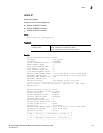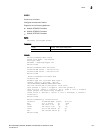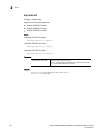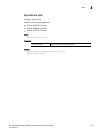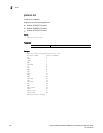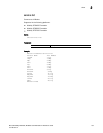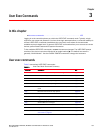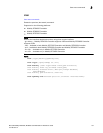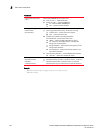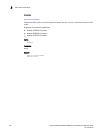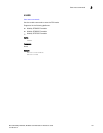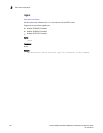
Brocade Mobility RFS4000, RFS6000 and RFS7000 CLI Reference Guide 155
53-1001931-01
Chapter
3User Exec Commands
In this chapter
•User exec commands . . . . . . . . . . . . . . . . . . . . . . . . . . . . . . . . . . . . . . . . . . 155
Logging in to the controller places you within the USER EXEC command mode. Typically, a login
requires a user name and password. You have three login attempts before a connection attempt is
refused. USER EXEC commands (available at the user level) are a subset of the commands
available at the privileged level. In general, USER EXEC commands allow you to connect to remote
devices, perform basic tests and list system information.
To list available USER EXEC commands, use ? at the command prompt. The USER EXEC prompt
consists of the device host name followed by an angle bracket (>). The default host name is
generally “WLAN Module”. Use the GLOBAL CONFIG command to change the hostname.
User exec commands
Table 3 summarizes USER EXEC commands:
TABLE 3 User Exec Mode Command Summary
Command Description Ref.
clear Resets the command to the previous configuration page 157
clrscr Clears the display screen page 32
cluster-cli Displays the cluster context page 159
disable Turns off (disables) the privileged mode command set page 160
enable Turns on (enables) the privileged mode command set page 161
exit Ends the current mode and moves down to the previous
mode
page 33
help Describes the interactive help system page 34
logout Exits the EXEC mode page 162
no Negates a command or sets its defaults page 35
page Toggles the paging functionality page 163
ping Sends ICMP echo messages page 164
quit Exits the current mode and moves to the previous mode page 165
service Displays service commands page 37
show Shows running system information. Refer to Common
commands on page 31
page 59
telnet Opens a telnet session page 166



